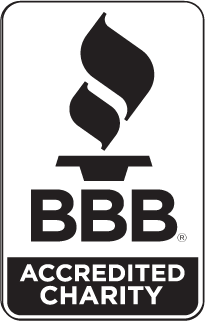The One Thing We Must Get Right Before the Next Pandemic
COVID-19 has taught us hard lessons about our nation’s pandemic readiness. If we are willing to take action, we can avoid repeating them.
As hard as it is to imagine, the next COVID-like pandemic could strike any day now. And before it does, it is critical that the U.S. establishes a national program to rapidly deliver effective new vaccines to avert cataclysmic levels of mortality, economic destruction, social upheaval, and insecurity.
Though COVID-19 has tragically killed more than 400,000 Americans in its first year alone, the next new pandemic virus could be even more transmissible and lethal. COVID-19 has damaged economies, compromised our children’s development, and threatened our future as a nation. But even more alarming is the reality that many scientists have long predicted a pandemic that would claim tens of millions of lives. It hasn’t happened yet, but it’s just a matter of time.
We have a lot to be thankful for to fuel our optimism. The new mRNA COVID-19 vaccines have been a phenomenal accomplishment and will be a game-changer. Both vaccines are safe and highly efficacious in preventing severe disease and were developed in a matter of months, not years. Crucially, it looks like these vaccines can be modified for variant strains of COVID-19 as they evolve. And there are more efficacious vaccines in the pipeline.
This scientific advancement, fueled by significant and rapid investment, bodes well for timely vaccine development with the next pandemic. And we have seen that non-pharmacologic measures like masks, social distancing, and hygiene, if strictly implemented, can buy us some time as new vaccines are developed.
Furthermore, in the National Institutes of Health, Food and Drug Administration, and Centers for Disease Control and Prevention, we have some of the leading scientists and health agencies in the world. And working alongside them are highly-skilled health workers who have been the true heroes this first year in caring for those sick with COVID-19 disease.
But time really matters when it comes to preventing an outbreak from advancing to an epidemic or global pandemic. Delaying effective control measures for days or weeks leads to exponential growth of new infections and deaths. That is why it’s not enough to accelerate clinical trials and manufacturing for new vaccines alone as has been done for COVID-19 in the U.S. — there must also be a rapid delivery system to immunize at least 80% of the population to reach herd immunity, beginning with those at greatest risk.

Being brand new products, it is somewhat understandable that there is not yet sufficient COVID-19 vaccine supply available on the market to reach everyone in need. This will improve. However, while every effort is being made to scale up vaccine production as safely and quickly as possible, insufficient supply is only part of the explanation for why after the first two months of vaccinations, we haven’t even reached 5% of the U.S. population.
The true reason is that in the U.S. we have a conglomerate of vaccine delivery services across 50 states, hundreds of cities, and more than 3,000 counties that are not interrelated to form a unified whole. Each state, city, and county has essentially been left to their own devices and ingenuity to create a vaccination system during a raging pandemic, further overwhelming already exhausted and underfunded state and local health departments. All of them must form their own supply chains to maintain the cold chain so the vaccine doesn’t spoil, as well as their own communication strategy, vaccine operations, staff training, patient registration, and public information systems. This is terribly inefficient and has clearly not served us well with COVID-19.
“While it would be important to embed the creation of a national emergency immunization program into federal and state legislation, much of this could be done with current resources, agencies, and mandates.”
So what would a national emergency immunization program look like? The roles and responsibilities at the federal level would remain relatively the same: the White House for leadership, Congress for allocating funds, the NIH in charge of vaccine research and development, the FDA responsible for oversight of regulatory requirements for vaccine registration and manufacturing, the CDC for national guidelines and communication with the public, and the Department of Health and Human Services for vaccine procurement and funding to the states for vaccine delivery.
Two things would need to be vastly different for it to truly be a national program: federal funding and clearly communicated guidance and support for standardization across state and local health departments. This federal support would provide logistical consistency and standardization, making the process faster and more efficient. It would include a nationwide command structure, patient eligibility criteria, an online registration system, a helpline, educational materials, and public service announcements. It would also clearly define the roles for external workers like FEMA and the National Guard, as well as the private sector.
It would offer guidelines for different types of venues to use, such as vacant schools, community centers, and sports facilities. And it would provide personnel from the federal level to assist states and local tribal authorities to administer the funding and move resources (funds, staff, and supplies) through the system.
Of course, enough flexibility would need to be incorporated into the system to allow for states and local health officials to maintain a leadership role in their state, to be creative and innovative in vaccinating the local hard-to-reach populations they know best, and to leverage local resources with those coming from the federal level.
We can — and must — do this now as soon as COVID-19 is brought under control. While it would be important to embed the creation of a national emergency immunization program into federal and state legislation, much of this could be done with current resources, agencies, and mandates.
The COVID-19 pandemic has taught us painful lessons. We don’t want to repeat them. We owe it to those Americans who have lost their lives, and to their families, to create a new reality so this never happens again. It is up to us — nobody else.







